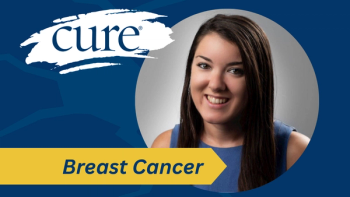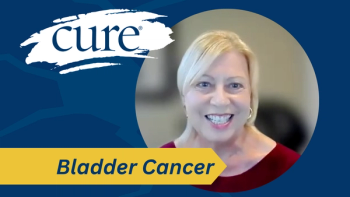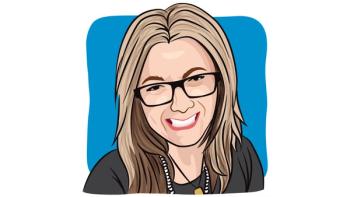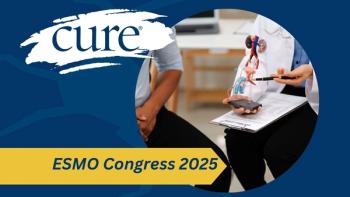
Navigating the Maze of Disability
Navigating through the maze of disability insurance.
Applying for disability benefits can be like navigating through a maze. The process is different for each person, the paperwork can be overwhelming, and even figuring out what type of disability to apply for can be daunting.
“For the average person, there is no reason to know this information until you need it,” says Joanna Morales, director of the
About 40 percent of people diagnosed with cancer are working-age adults, and many get to a point where they are unable to work, even if only for a brief period, Morales says. For those times, patients and survivors should consider applying for disability.
Since qualifying for disability requires clearing a number of hurdles, Morales suggests patients begin thinking about the application process from the time they are diagnosed—even if they don’t think they need it at the time. So if patients realize they do need it down the road, they can avoid being caught in a lurch.
Figuring out what type of disability to apply for is the first challenge. There are short-term and long-term disability programs that maybe provided by an employer or by a private plan. Through the Social Security Administration, the federal government provides long-term disability benefits with Supplemental Security Income (SSI) and/or Social Security Disability Insurance (SSDI).
“When you talk about disability, people will confuse short-term disability and long-term disability insurance, and Social Security Disability Insurance and Supplemental Security Income,” says Michelle Shanks, senior case manager at the Patient Advocate Foundation. “They are kind of confusing, but they can go hand-in-hand.”
Short-term disability, generally for periods of up to six months, is usually provided by an employer or a private plan. However, five states (California, Hawaii, New Jersey, New York, and Rhode Island) and Puerto Rico provide short-term disability, each with its own requirements.
Long-term disability is for an illness or injury that would last 12 or more months, and/or is expected to be terminal. Depending on the policy, benefits will only be paid after an individual has been out of work for at least six months.
The government’s SSI program is a needs-based program for disabled individuals with low or no income. Those who receive SSI benefits may also be eligible to receive Medicaid, a state-managed health program for low-income individuals. SSDI benefits are based on a person’s earnings and how much money has been paid in social security taxes. However, persons on SSDI must wait two years to be eligible for Medicare.
To gain a firm grasp of which type of disability you may be eligible for and the various application processes, the
Also, organizations such as the
Another challenge is the approval process. Disability claims are made on a case-by-case basis, and most systems are set up to deny people the first time they apply, says Morales. “Disability determination is very individual, but there are lots of people who fall through the cracks."
Because of this problem, Morales says it’s important for individuals to resubmit their application if they are denied the first time. If they are denied again, they should consider seeking the help of a disability lawyer or patient advocacy organization.
Shanks stresses the importance of including your entire medical record when applying for disability, especially for government benefit plans. To receive SSDI benefits, an individual cannot be partially disabled or be seeking short-term benefits. Under social security, disabled means you are unable to do the work you previously did; are unable to adjust to another type of work; and your disability has lasted, or is expected to last, for more than a year, or will lead to death. Private insurers may have a different definition.
Because of the government’s definition of disability, Shanks says sometimes a primary diagnosis doesn’t guarantee approval for social security disability—but add on a secondary diagnosis (cancer-related or not) or various side effects, and one may qualify. “They try to look at the whole picture of the patient,” she says.
When putting together your application, collaborate with your doctor to help best explain how your medical condition will keep you from working.
If you receive your disability benefits through an employer or private plan, the wait may not be as long as for government options. Unlike governmental benefits, there’s the option of short-term coverage or workers’ compensation. But this isn’t the case if you’re seeking SSDI benefits, which takes a minimum of five to six months from the time of your disability to be activated.
Although this is not the case for everyone, the rules of social security assume that working families should have other resources to tap into, such as employer insurance, workers’ compensation, savings, and investments, while they wait for long-term benefits.
Fortunately, in 2008, the SSA implemented a “fast-track” system called
Recently, Shanks assisted Tyann Roberts, a 57-year-old from Frisco, Texas, receive benefits using the Compassionate Allowances program. Roberts was diagnosed with small cell lung cancer in early February, but had recently lost her job and didn’t have insurance. Her hospital’s financial counselors suggested Roberts apply for disability. But the financial counselors also told her it would take five to six months before she would receive any funds—and the doctor gave her two to four months to live.
“I’m like, ‘It wouldn’t do me any good to try,’ ” Roberts says. “I’m pretty much thinking to myself, ‘Chances are I’m not going to get any help anywhere.’ ”
Roberts was also concerned when she realized she’d have to forfeit her unemployment benefits to even apply for disability. She worried about how she’d be able to sustain herself during the five- to six-month wait before benefits would be disbursed. It just didn’t seem worth it, she says.
However, Shanks helped Roberts apply under Compassionate Allowance for SSDI. Within two weeks of applying, Roberts was approved for SSI benefits and began receiving a portion of the benefits she needed. After the required wait period (which varies from case to case), she’ll begin receiving SSDI benefits as well.
Even if a patient or survivor doesn’t qualify for the Compassionate Allowance program, Shanks and Morales say it’s important to anticipate the possible need for disability, and be proactive in understanding and applying for the available benefits.
“Apply as soon as possible, even if you don’t think you qualify,” Morales says. “You should never assume that you don’t. And the earlier you start the process, the earlier you have access to the benefits.”
>
The Social Security Administration provides online booklets to help explain
>
Another government website,
>
Get tips, advice, explanations, and answers from a former disability claims examiner at
>
If you live in a state that provides state disability, check out
>





